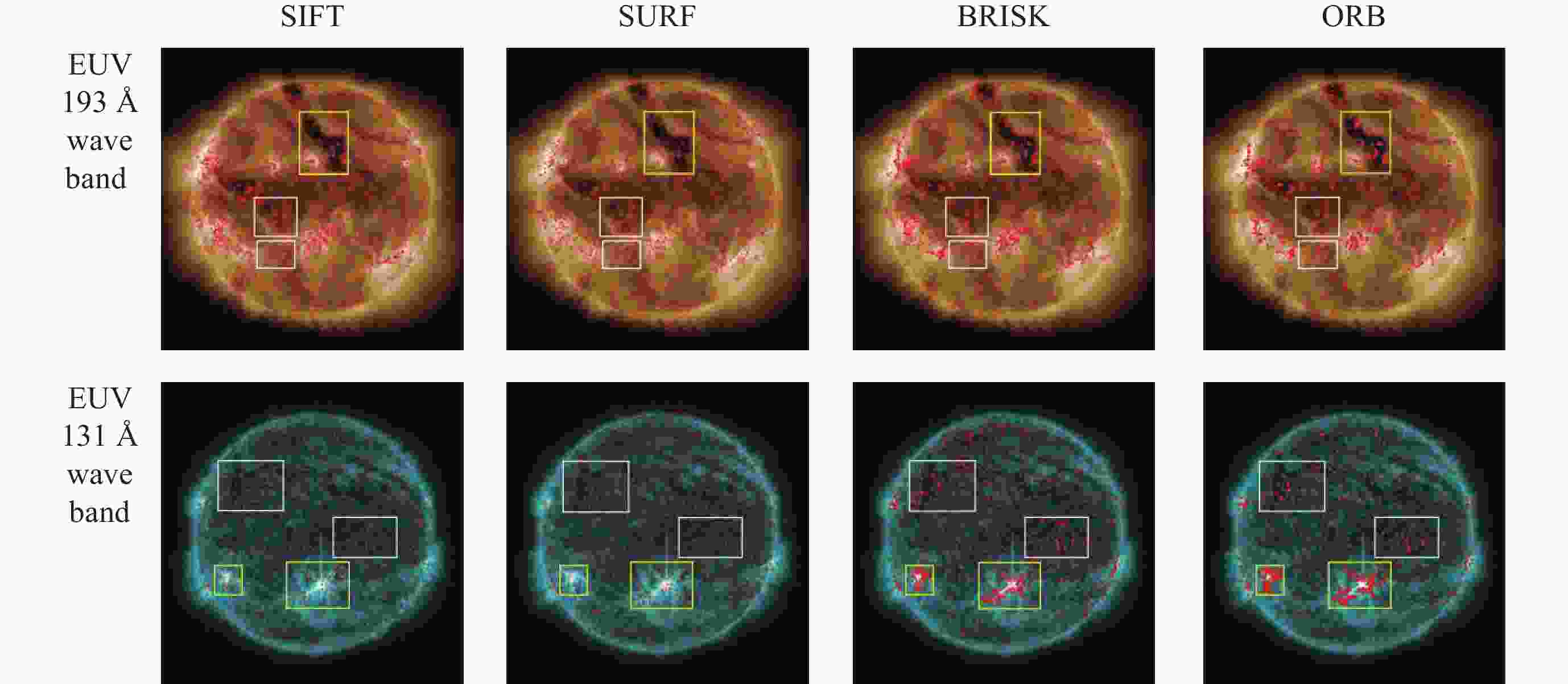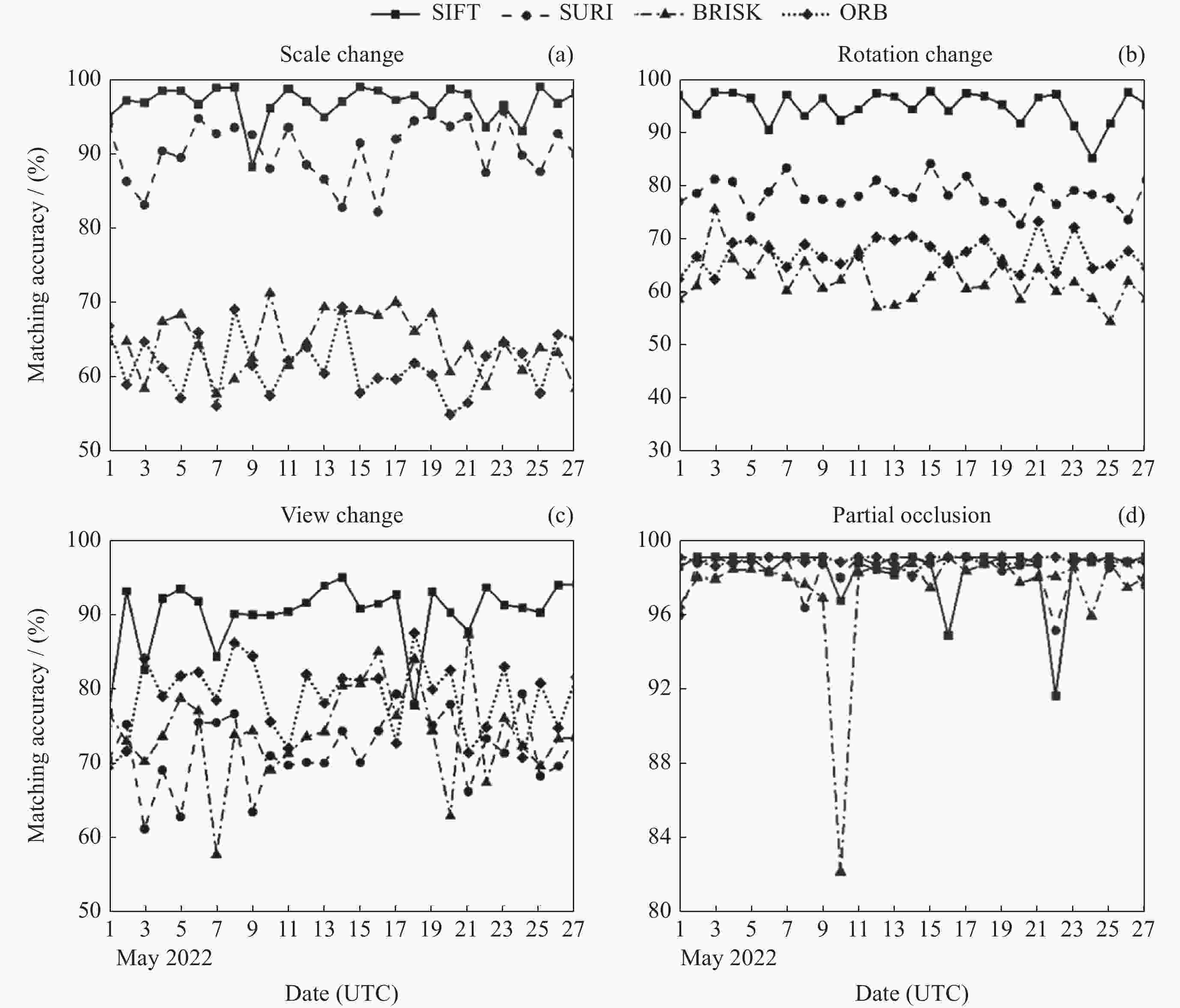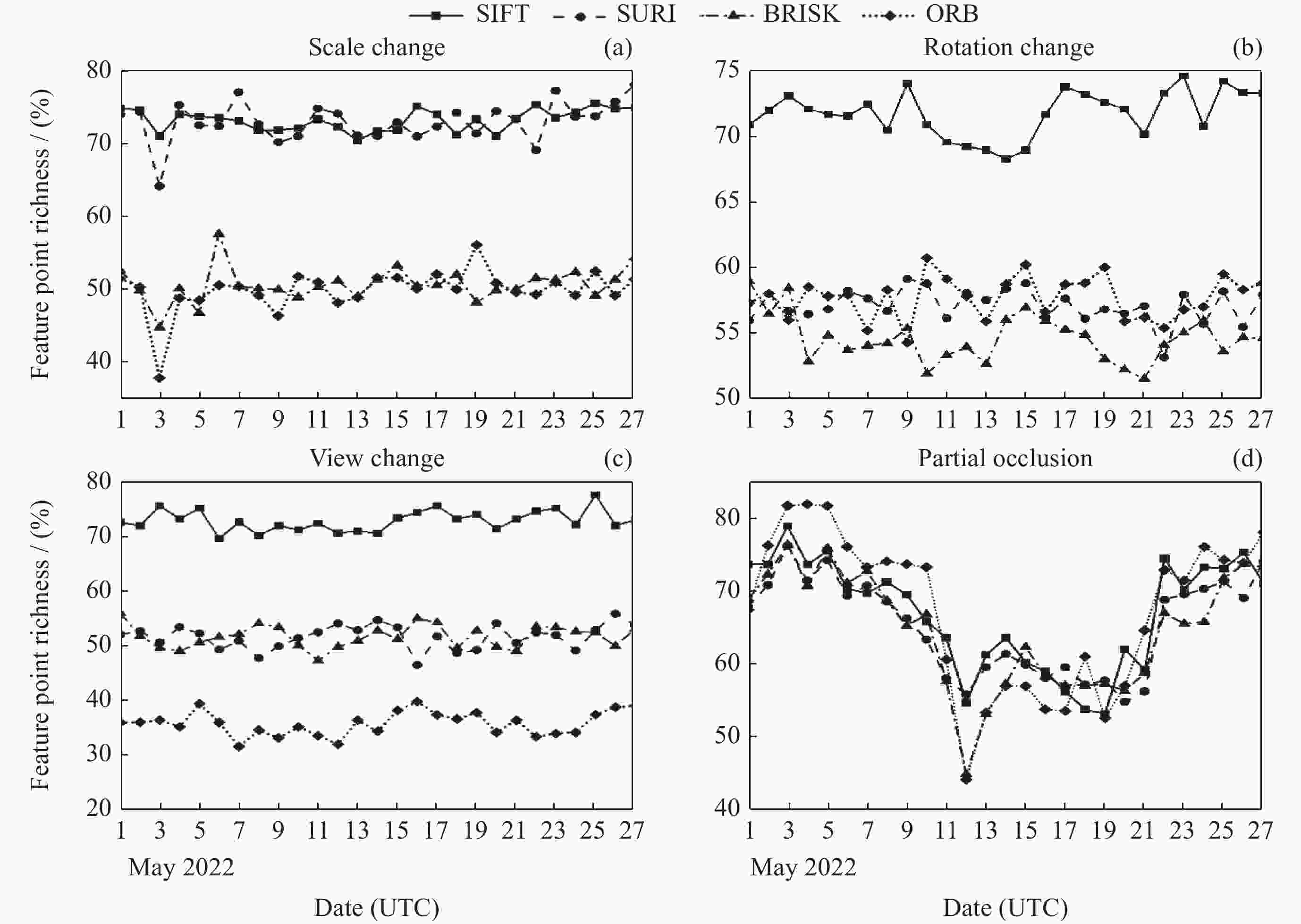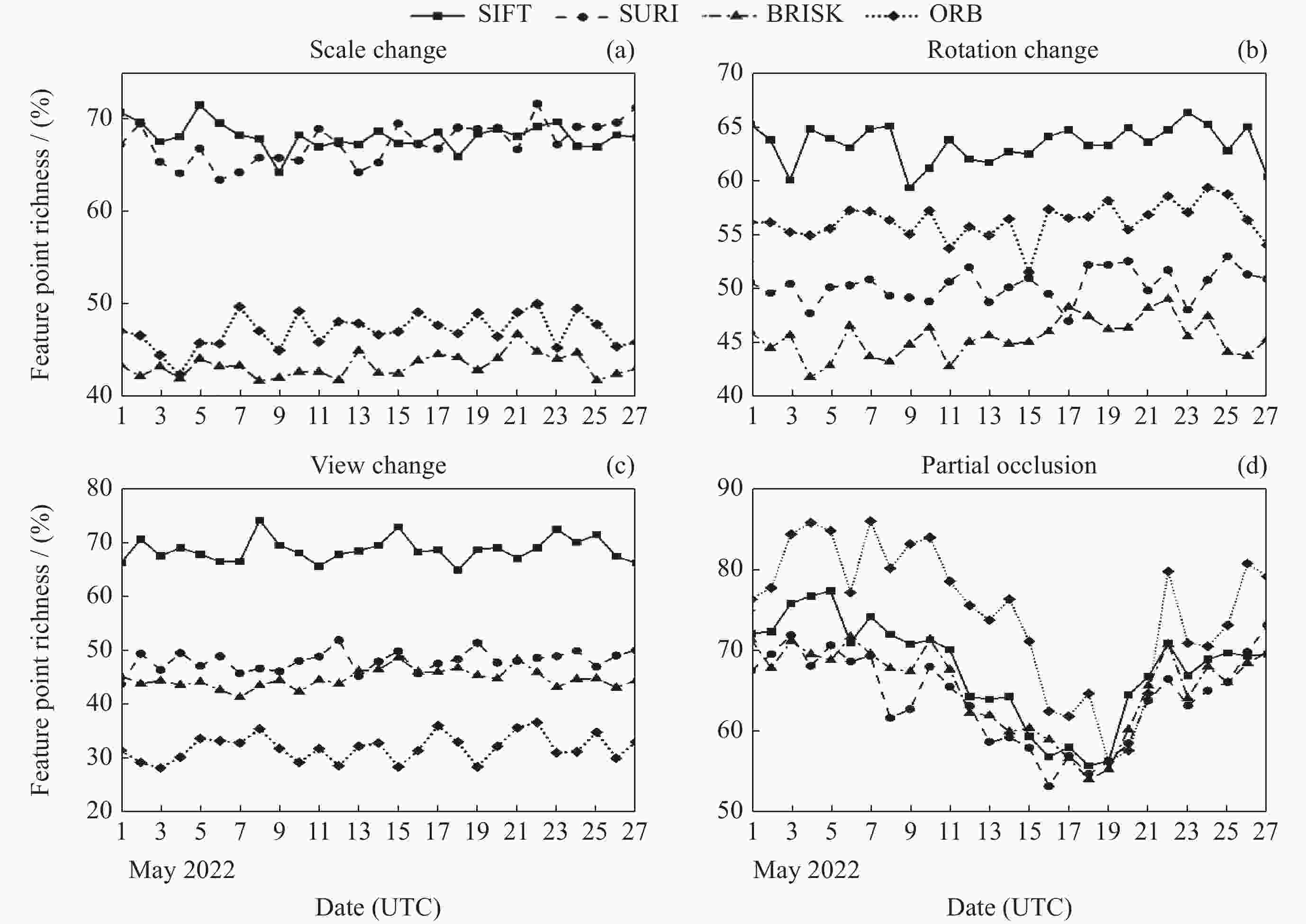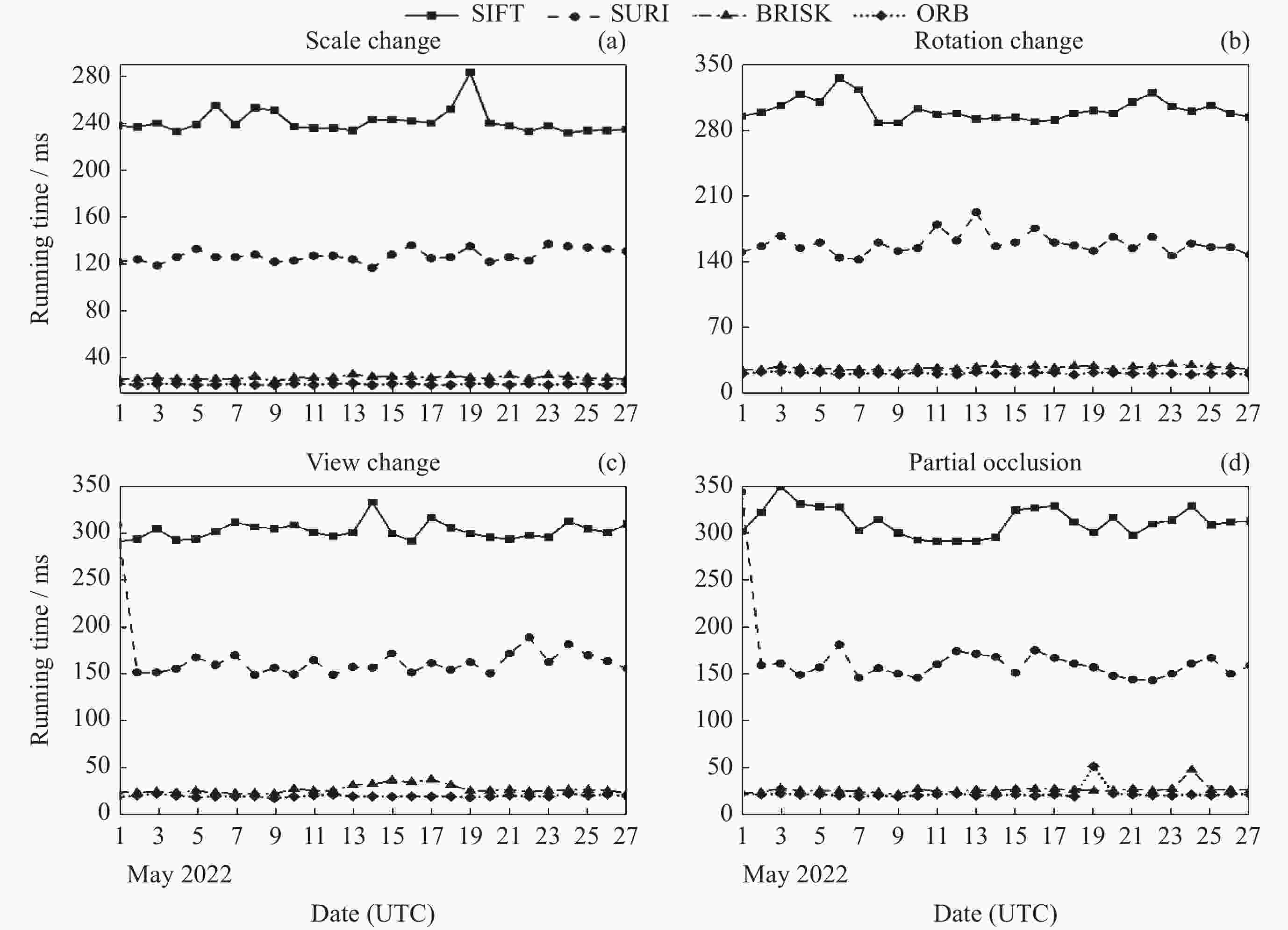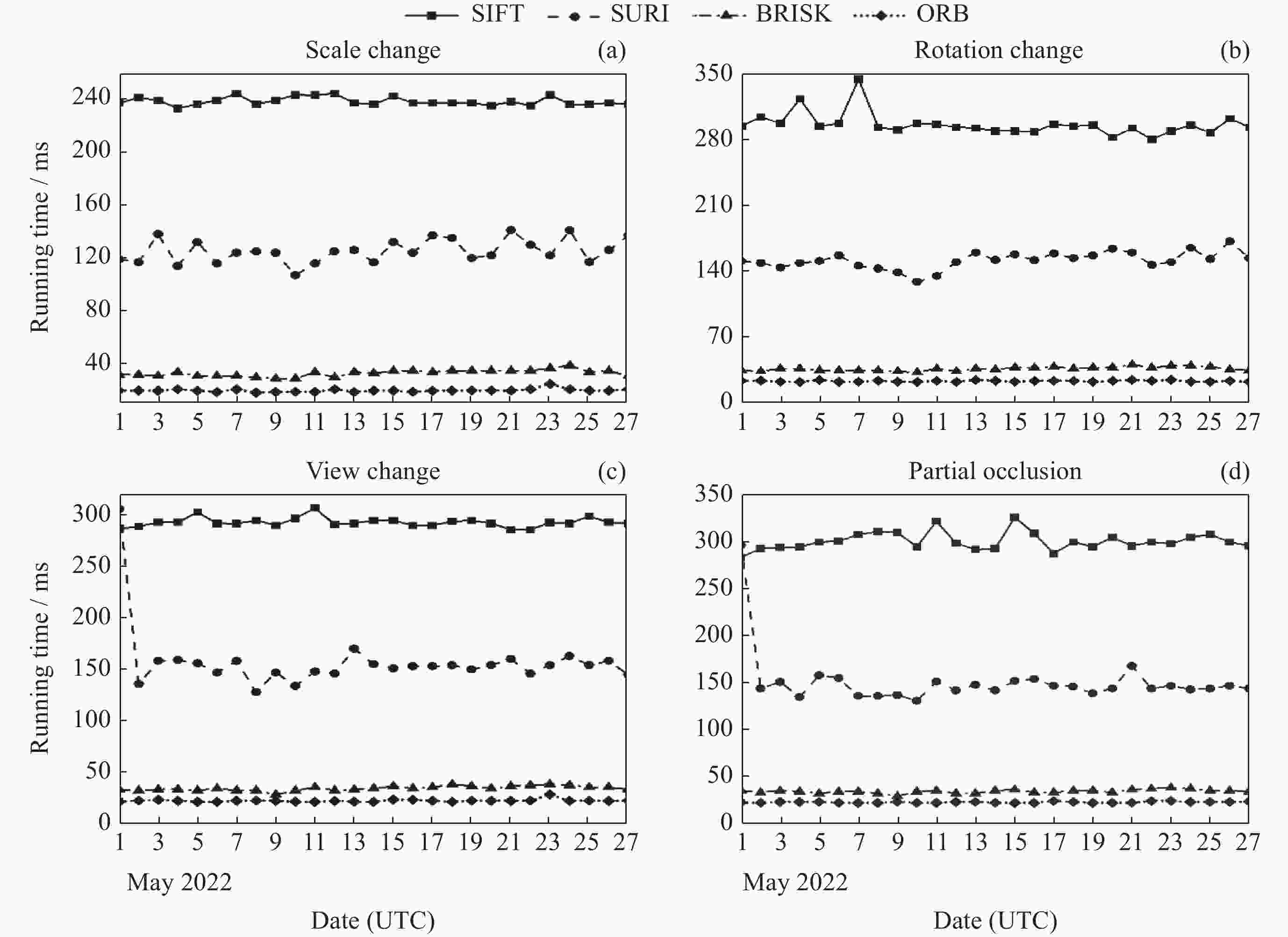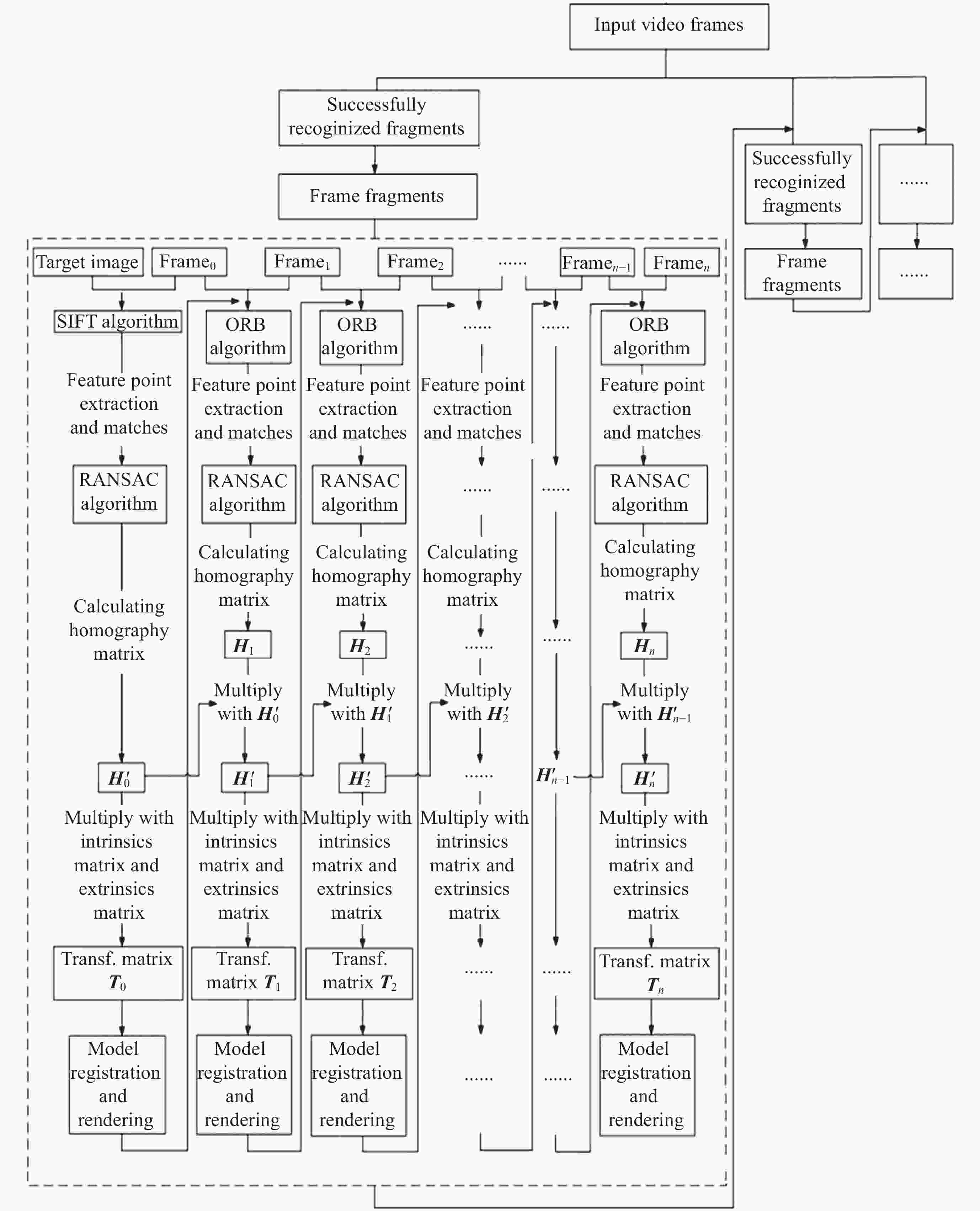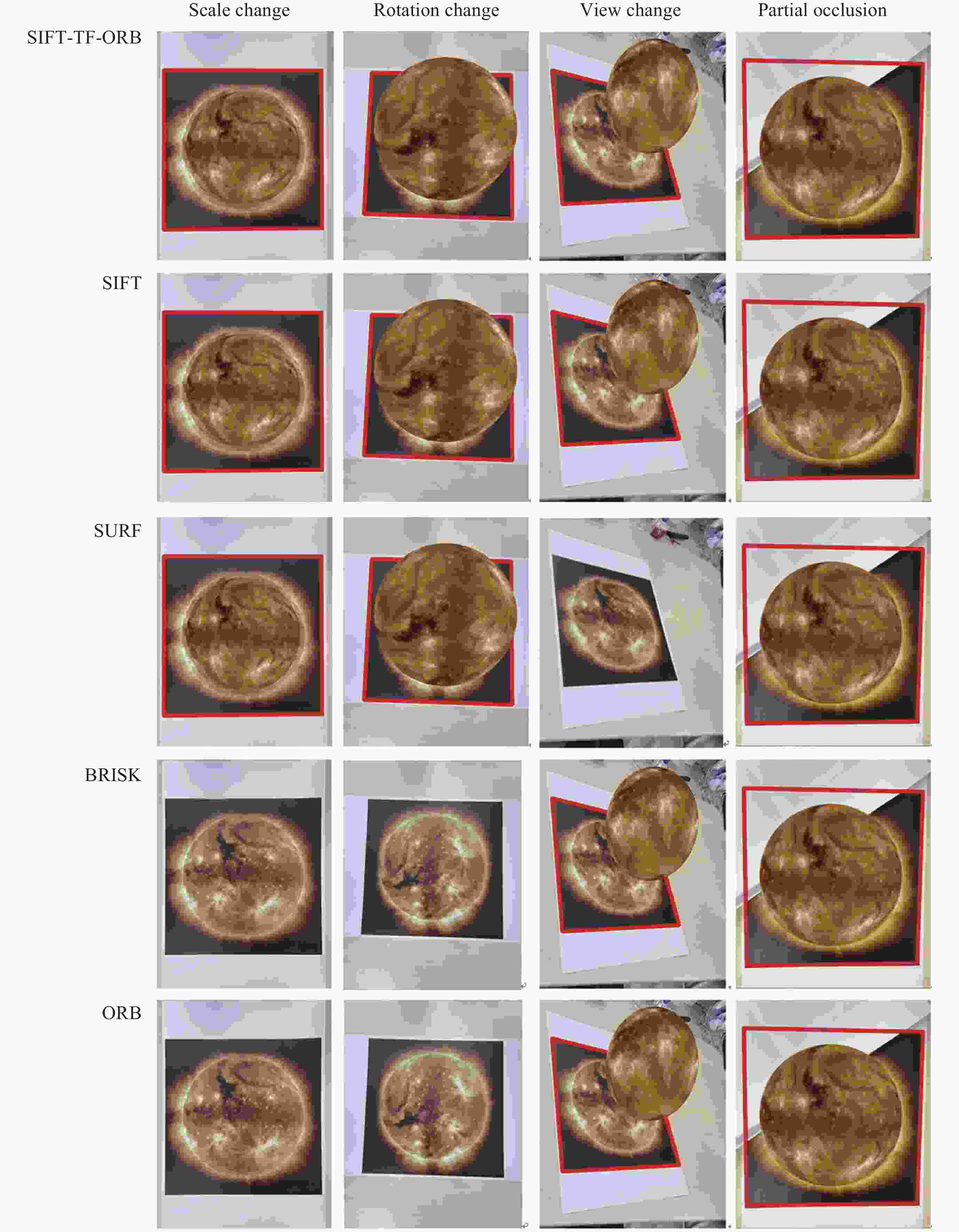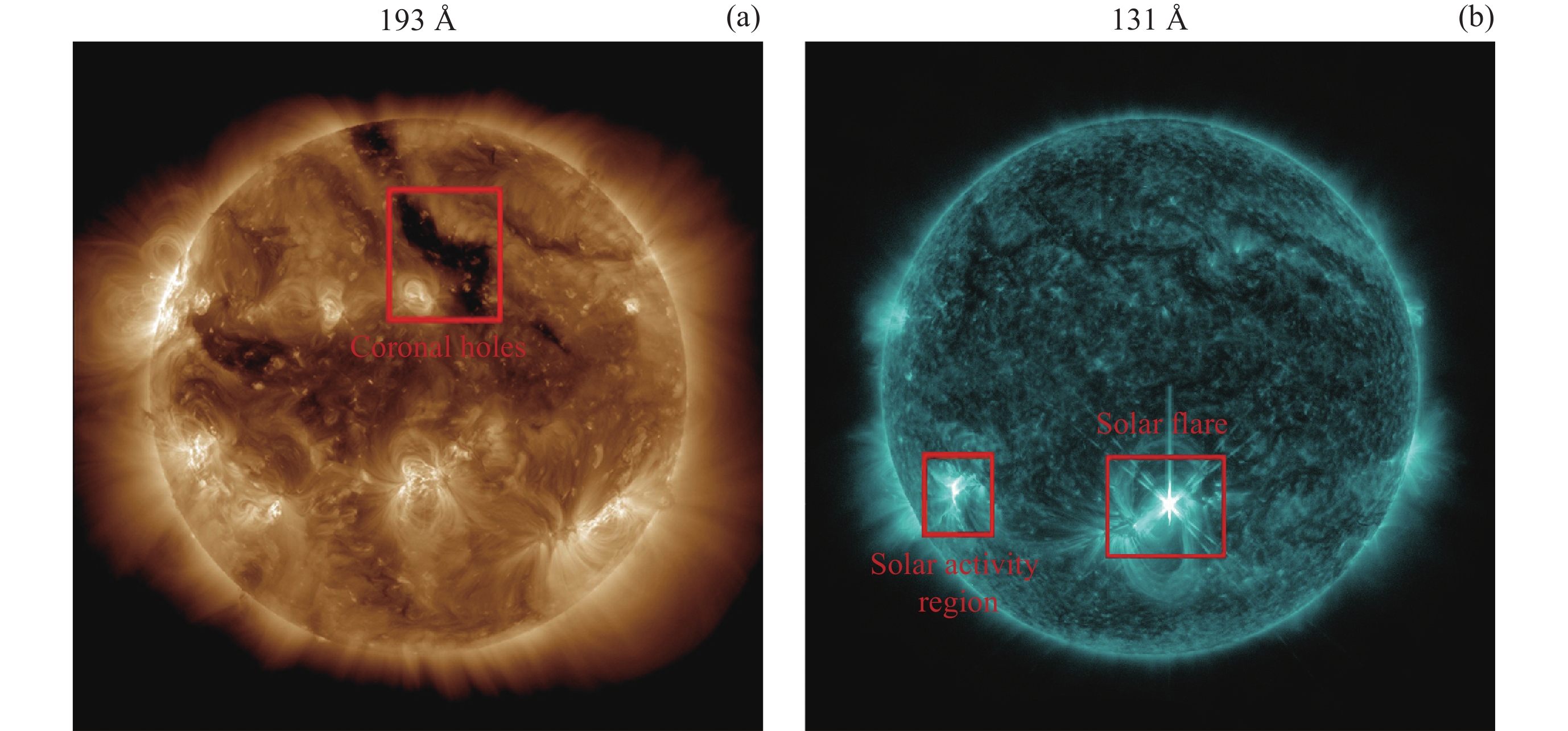Image Feature Extraction and Matching of Augmented Solar Images in Space Weather
doi: 10.11728/cjss2023.05.2022-0064 cstr: 32142.14.cjss2023.05.2022-0064
-
Abstract: Augmented solar images were used to research the adaptability of four representative image extraction and matching algorithms in space weather domain. These include the scale-invariant feature transform algorithm, speeded-up robust features algorithm, binary robust invariant scalable keypoints algorithm, and oriented fast and rotated brief algorithm. The performance of these algorithms was estimated in terms of matching accuracy, feature point richness, and running time. The experiment result showed that no algorithm achieved high accuracy while keeping low running time, and all algorithms are not suitable for image feature extraction and matching of augmented solar images. To solve this problem, an improved method was proposed by using two-frame matching to utilize the accuracy advantage of the scale-invariant feature transform algorithm and the speed advantage of the oriented fast and rotated brief algorithm. Furthermore, our method and the four representative algorithms were applied to augmented solar images. Our application experiments proved that our method achieved a similar high recognition rate to the scale-invariant feature transform algorithm which is significantly higher than other algorithms. Our method also obtained a similar low running time to the oriented fast and rotated brief algorithm, which is significantly lower than other algorithms.
-
Figure 2. Examples of solar images with feature points extracted by four representative image feature extraction and matching algorithms. Yellow frames illustrated feature points caused by coronal holes, flare events and active regions. White frames illustrated feature point aggregation caused by the blurred and inconspicuous color transition regions
Table 1. Image recognition rate (unit [%]) results of augmented solar images in the EUV 193 Å wave band
Scale change Rotation change View change Partial occlusion Average SIFT-TF-ORB 90.83 92.50 92.50 96.66 93.10 SIFT 95.00 100.00 98.33 100.00 98.33 SURF 61.66 66.66 85.00 83.33 74.16 BRISK 32.50 50.00 61.66 74.16 54.58 ORB 74.16 87.50 86.66 87.50 86.45 Table 2. Image recognition rate (unit [%]) results of augmented solar images in the EUV 131 Å wave band
Scale change Rotation change View change Partial occlusion Average SIFT-TF-ORB 94.16 95.00 95.00 99.16 95.82 SIFT 99.16 96.66 95.83 100.00 97.91 SURF 91.66 75.00 60.83 84.16 77.91 BRISK 52.50 32.50 25.83 88.33 49.79 ORB 90.00 80.83 68.33 97.50 84.16 Table 3. Results of running time (unit ms) used to process each input video frame in the EUV 193 Å wave bands
Scale change Rotation change View change Partial occlusion Average SIFT-TF-ORB 11.75 12.16 12.00 11.83 11.93 SIFT 119.83 124.58 120.08 120.00 121.12 SURF 64.08 73.33 73.75 63.58 68.68 BRISK 12.75 15.58 15.08 12.66 14.02 ORB 9.41 9.50 9.08 9.16 9.29 Table 4. Results of running time (unit ms) used to process each input video frame in the EUV 131 Å wave bands
Scale change Rotation change View change Partial occlusion Average SIFT-TF-ORB 11.83 11.91 11.58 11.41 11.68 SIFT 119.58 123.25 122.66 120.66 121.54 SURF 59.66 61.50 60.00 56.41 59.39 BRISK 14.08 13.25 12.66 11.08 12.77 ORB 8.91 9.08 8.83 8.66 8.87 -
[1] PARSAPOOR M, BILSTRUP U, SVENSSON B. Forecasting solar activity with computational intelligence models[J]. IEEE Access, 2018, 6: 70902-70909 doi: 10.1109/ACCESS.2018.2867516 [2] MENG X J, CHEN D, SHI L Q, et al. Statistical study of surface-charging events in aurora region over one solar cycle[J]. IEEE Transactions on Plasma Science, 2019, 47(8): 3942-3946 doi: 10.1109/TPS.2019.2921837 [3] JANKEE P, OYEDOKUN D, SOLTANIAN M, et al. Geomagnetically induced currents: frequency spectra and threats to voltage stability[J]. IEEE Access, 2022, 10: 62484-62501 doi: 10.1109/ACCESS.2022.3182237 [4] CHAPANOV Y, GORSHKOV V. Solar activity and cosmic ray influence on the climate[J]. Geomagnetism and Aeronomy, 2019, 59(7): 942-949 doi: 10.1134/S0016793219070090 [5] AHMED O W, QAHWAJI R, COLAK T. Calculate the energy of active regions and solar disk on satellite images for real-time solar flare forecasting[C]//2009 International Conference on CyberWorlds. Bradford: IEEE, 2009: 224-230 [6] GRUBERT J, LANGLOTZ T, ZOLLMANN S, et al. Towards pervasive augmented reality: context-awareness in augmented reality[J]. IEEE Transactions on Visualization and Computer Graphics, 2017, 23(6): 1706-1724 doi: 10.1109/TVCG.2016.2543720 [7] BAABDULLAH A M, ALSULAIMANI A A, ALLAMNAKHRAH A, et al. Usage of augmented reality (AR) and development of e-learning outcomes: an empirical evaluation of students’ e-learning experience[J]. Computers & Education, 2022, 177: 104383 [8] KHADDAD A, BERNHARD J C, MARGUE G, et al. A survey of augmented reality methods to guide minimally invasive partial nephrectomy[J]. World Journal of Urology, 2022, 41(2): 335-343 doi: 10.1007/s00345-022-04078-0 [9] ZHANG Y F, MIAO Y D, CHEN C Y, et al. Outdoor military simulation system based on augmented reality[J]. Optical Technique, 2019, 45(5): 622-628 [10] IVASCHENKO A, KHORINA A, SITNIKOV P. Accented visualization by augmented reality for smart manufacturing aplications[C]//2018 IEEE Industrial Cyber-Physical Systems (ICPS). St. Petersburg: IEEE, 2018: 519-522 [11] GONG Y Z, SEIBEL E J. Feature-based three-dimensional registration for repetitive geometry in machine vision[J]. Journal of Information Technology & Software Engineering, 2016, 6(4): 184 [12] LOWE D G. Distinctive image features from scale-invariant keypoints[J]. International Journal of Computer Vision, 2004, 60(2): 91-110 doi: 10.1023/B:VISI.0000029664.99615.94 [13] XU K, LIU J X, MIAO J, et al. An improved SIFT algorithm based on adaptive fractional differential[J]. Journal of Ambient Intelligence and Humanized Computing, 2019, 10(8): 3297-3305 doi: 10.1007/s12652-018-1055-1 [14] BAY H, TUYTELAARS T, VAN GOOL L. SURF: speeded up robust features[C]//9th European Conference on Computer Vision (ECCV 2006). Graz: Springer, 2006: 404-417 [15] SHENG H Y, WEI S M, YU X L, et al. Research on binocular visual system of robotic arm based on improved SURF algorithm[J]. IEEE Sensors Journal, 2020, 20(20): 11849-11855 doi: 10.1109/JSEN.2019.2951601 [16] LEUTENEGGER S, CHLI M, SIEGWART R Y. BRISK: binary robust invariant scalable keypoints[C]//2011 IEEE International Conference on Computer Vision (ICCV). Barcelona: IEEE, 2011: 2548-2555 [17] ZHOU X, TANG L Y, LIN D. Virtual-real registration method of natural features based on binary robust invariant scalable keypoints and speeded up robust features[J]. Journal of Computer Applications, 2020, 40(5): 1403-1408 [18] RUBLEE E, RABAUD V, KONOLIGE K, et al. ORB: an efficient alternative to SIFT or SURF[C]//2011 IEEE International Conference on Computer Vision (ICCV). Barcelona: IEEE, 2011: 2564-2571 [19] MA C Q, HU X G, XIAO J, et al. Improved ORB algorithm using three-patch method and local gray difference[J]. Sensors, 2020, 20(4): 975 doi: 10.3390/s20040975 [20] XIANG Y M, WANG F, YOU H J. OS-SIFT: a robust SIFT-like algorithm for high-resolution optical-to-SAR image registration in suburban areas[J]. IEEE Transactions on Geoscience and Remote Sensing, 2018, 56(6): 3078-3090 doi: 10.1109/TGRS.2018.2790483 [21] CHENG C, WANG X Z, LI X J. UAV image matching based on surf feature and Harris corner algorithm[C]//4 th International Conference on Smart and Sustainable City (ICSSC 2017). Shanghai: IEEE, 2017: 1-6 [22] AL TAEE E J, ABDULSAMAD A. A new approach for fingerprint authentication in biometric systems using BRISK algorithm[J]. International Journal on Advanced Science, Engineering and Information Technology, 2018, 8(5): 1941-1947 doi: 10.18517/ijaseit.8.5.6239 [23] PAN Y J. Vision and Multi-Sensor Fusion Based Mobile Robot Localization in Indoor Environment[D]. Hangzhou: Zhejiang University, 2019 [24] YU X X, XU L, REN Z X, et al. Image desaturation for SDO/AIA using mixed convolution network[J]. Research in Astronomy and Astrophysics, 2022, 22(6): 065009 doi: 10.1088/1674-4527/ac69b7 [25] DOU F P, XU L, REN Z X, et al. Super-resolution of solar magnetograms using deep learning[J]. Research in Astronomy and Astrophysics, 2022, 22(8): 085018 doi: 10.1088/1674-4527/ac78ce [26] JIAO F R, XIA L D, HUANG Z H. Damping and power spectra of quasi-periodic intensity disturbances above a solar polar coronal hole[J]. Research in Astronomy and Astrophysics, 2016, 16(6): 008 doi: 10.1088/1674-4527/16/6/093 [27] TANG L X. Research on Scene Recognition and Tracking Registration Technology of Mobile Augmented Reality[D]. Beijing: Beijing University of Posts and Telecommunications, 2020 [28] LI Z X, LI J. The optimization of video stabilization’ Sift algorithm[J]. Journal of Harbin University of Science and Technology, 2013, 18(2): 109-113 [29] YE S. Real-Time Pose Tracking Methods of Moving Object[D]. Nanjing: Nanjing University of Science and Technology, 2020 [30] LEI L, ZHONG Q Z, WANG J J, et al. The mid-term forecast method of F10.7 based on extreme ultraviolet images[J]. Advances in Astronomy, 2019, 2019: 5604092 -
-





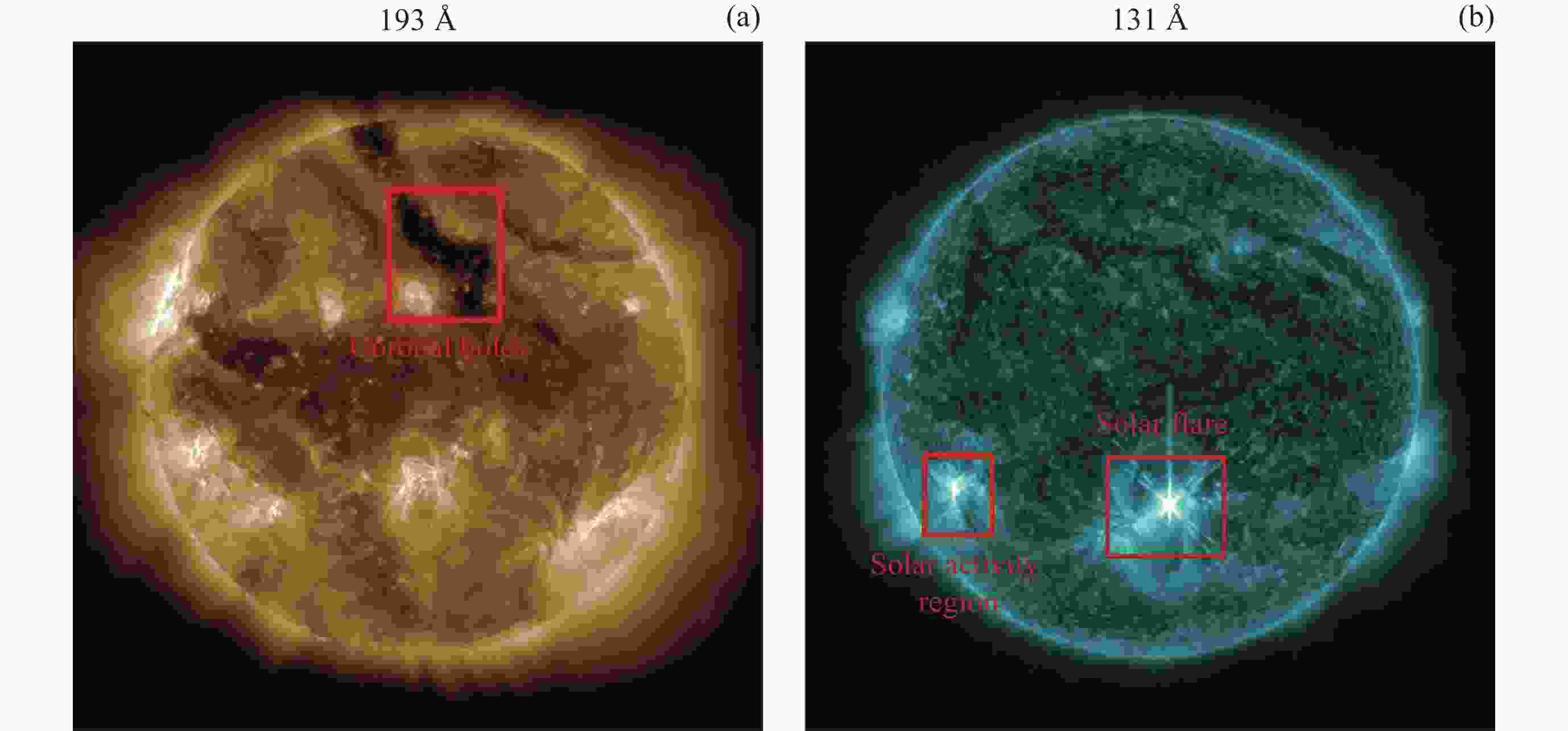
 下载:
下载:
